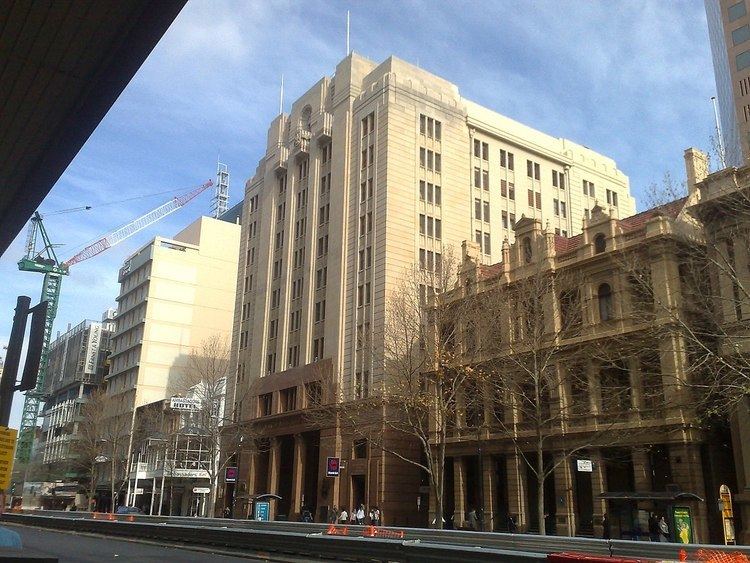Founded 1848 | ||
 | ||
Savings bank of south australia
The Savings Bank of South Australia was founded in 1848, trading from a single room in Gawler Place, Adelaide. In 1984 it merged with the State Bank of South Australia, with the merged entity taking the latter name. The Bank of South Australia (also known as BankSA) is now a division and a trading name of St.George Bank, which is now a subsidiary of Westpac.
Contents
History
The Savings Bank of South Australia first opened on 11 March 1848 with a single employee, John Hector, trading from a room in Adelaide's Gawler Place. The room was provided rent-free by the Glen Osmond Mining Company. On that day it took its first deposit, of £29, from an illiterate Afghan shepherd whose name was recorded as Croppo Sing (although the Sikh masculine surname is correctly spelt "Singh"). Other deposits soon followed. A month later, the fledgling bank made its first loan, of £500, to John Colton. Colton became a successful businessman and later politician, and in 1875 was appointed to the bank's board of trustees. The bank was based on the savings bank movement first advocated by the Scotsman Rev. Henry Duncan. Prior to the advent of the savings bank movement, commercial banks were not interested in taking small deposits from working class men as the book work involved was more expensive than any potential benefit to the bank. Duncan believed that great benefit to society would result from encouraging the working class to deposit their savings in a bank and teaching the working class the important virtues of thrift .
Penny Bank Department
In 1907 the Savings Bank of South Australia established the Penny Bank Department to take deposits as little as one penny from school children. These school savings account quickly became popular and almost every public and private school in the state was permitted to take deposits from children on behalf of the bank. School banking was instrumental in instilling the savings mentality in children and helped to make the bank the largest in South Australia.
Growth and Development
During the 26 year era of Liberal Premier Sir Thomas Playford, the bank was a key tool of his vision for the SA's rapid economic and industrial development. Playford used both the Savings Bank and the State Bank to finance ETSA and the Housing Trust. The two state owned banks complemented each other. The Savings Bank was for the people to deposit their savings and for others to borrow money for mortgages on fair terms, while the State Bank was used for larger projects. During this period the bank took on many new customers, especially migrants brought out to South Australia under assisted migration schemes.
Merger
SA Labor Premier Don Dunstan first floated the idea of merging the State Bank and the Savings Bank, but the conservative trustees of the bank were strongly opposed to this idea and highly suspicious of the Labor Party. Early in his premiership, Dunstan had got the trustees offside by deceiving them by stating he intended to pass some minor annual leave changes through the Parliament, while actually changing the formation of the board and allowing the Labor Government to appoint the chairman of the Savings Bank and allowing trustees to sit on both boards, this had effect of giving control of the banks to Labor Party and not the trustees who had ably served both of the banks for many decades. Dunstan also had raided both of the banks of their reserve funds to pay for his health, education and arts schemes. After Dunstan had changed the composition of the banks boards they requested the Labor government for a merger, however Labor lost the 1979 election and Liberal Premier David Tonkin would not allow the banks to merge. Under the Labor Premier John Bannon, the two banks were merged. The combined bank 'The State Bank of South Australia' had rapid growth in the boom of the 1980s. However at the end of any boom there is a bust and the State Bank of SA like the State Bank of Victoria was unable to withstand the Keating recession of the early 1990s. The State Bank of SA had failed because it had a 'non-performing' loan portfolio, in other words repayments were not made on money lent. The collapse of the State Bank can be traced directly to the Labor policy of merging the two banks and not keeping the original trustees and conservative character of the Savings and State banks as under the Liberal Governments of Sir Thomas Playford, Steele Hall and David Tonkin.
